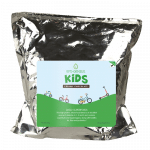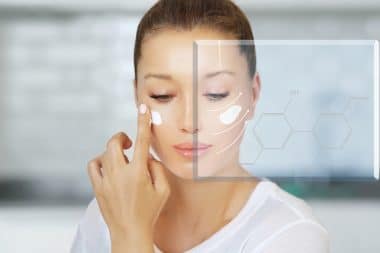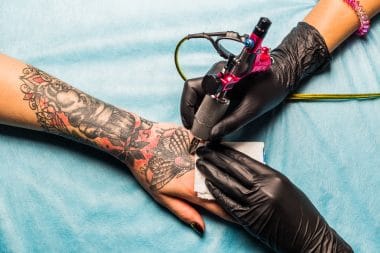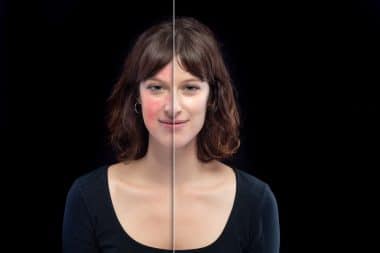Having a baby shouldn’t stop us from getting outside and enjoying the great outdoors. But how do we protect our sweet little bundles from the scorching sun? Lots of different ways actually. There are lots of different ways we can protect our babies from the sun no matter what age they are.Â
Â
Babies Under 6 Months
Babies that are younger than six months are not recommended to wear sunscreen. Baby skin is very delicate, and putting so many chemicals onto their little delicate skin can cause rashes, irritation, or a reaction. So if you have a baby younger than six months it’s best to not use sunscreen. If this is the case there are still things you can do to get outside with your baby.Â
The peak high sun points of the day are between the hours of 10am and 4pm. Try to not go out during those hours if you can. Otherwise stick to being in the shade. Dress your baby in loose breathable clothing with long sleeves and long pants. This way most of their skin will be covered. Have them wear a hat that has a big brim all the way around to not only protect their little face but to protect their neck as well.Â
Also make sure you are adding in some extra hydration when being out in the sun and heat. It is very easy for a baby to become dehydrated. Try to avoid putting a blanket over the stroller for this can cause overheating, and suffocation. Use the strollers sun shade to help block the sun.Â
Understanding Sunscreen Options
Now kids older than six months can use sunscreen. Picking a sunscreen in a store though can be hugely overwhelming. With all the different brands and types and bottles. One thing you may want to look for when picking out a sunscreen is to make sure it is specific for baby and children.Â
Picking a waterproof option is best regardless of if you think you will be in water or not. Waterproof also means protecting from sweat as well. Ingredients such as titanium dioxide or zinc oxide are good ones to look for, these ingredients sit on top of the skin to protect from the sun rays as opposed to absorbing all into the skin.Â
Make sure the bottle says broad spectrum protection. This means that the sunscreen will protect from both UVA and UVB rays.Â
Don’t get caught up by what the SPF says. Some scientists have studied that anything greater than SPF 50 may not be giving you any more extra protection.  As well as giving you the false feeling of having to reapply less often. So anything with an SPF between 30-50 will protect your children. Try to avoid getting sunscreen with an insect repellant. If you feel as though your child will need both, buy them separately. Â
Proper Sunscreen Application
Sunscreen for children over the age of 6 months is deemed acceptable. Since you will want to sunscreen most of their bodies make sure the sunscreen says that it is ok for full body use. It should say on the sunscreen bottle.Â
When applying make sure you apply a liberal amount of sunscreen. It is said that almost half of the people that apply sunscreen aren’t applying enough. The amount of sunscreen you lather all over your baby or toddlers body should fit into the palm of their hand. Another measuring tip is to think of the amount of liquid that fits into a shot glass, that is about how much you should be putting on.Â
Make sure when you are applying sunscreen to your little one to be careful around their eyes. If sunscreen does get into their eyes, use a wet washcloth to wipe out their eyes.Â
Don’t forget those spots like the back of the neck, ears, or tops of feet.Â
Along with sunscreen putting your kids in clothes that have UV protection in them already is a great idea. Clothes that are light colored or are not a thick fabric can allow UV rays to pass through. If your child is dressed in these types of fabrics you may want to sunscreen their little bods underneath to be safe.Â
Wearing a big bucket hat or baseball cap is a good idea when out in the sun. If your child will tolerate it make sure they wear sunglasses as well to protect their eyes from the sun’s rays. Â
Additional Reading:Â Sunscreen & Vitamin D
What To Do With A Sunburn
If your child does become sunburned, get them out of the sun immediately. Then apply cold compresses onto the skin that has been burned. You can apply aloe vera to help soothe and heal the skin. Tylenol can help with any pain or discomfort that your child experiences from the sunburn.Â
Takeaway
Sunscreen is to be applied every two hours, and if you have been in the water and get out you should reapply. Even if sunscreen says it is waterproof it will still wash off to some degree not giving you the appropriate coverage.Â
Sunscreen can take 15 to 30 minutes to start working. So make sure you apply a bit before you are out in the sun. A higher SPF coverage does not justify you not reapplying in the day.Â
Trying to stay out of the sun in its peak hours of 10am to 4pm can be best for your children. Don’t be fooled sunscreen is not just for the summer months or when it is only sunny. You can get UV rays during the winter and on cloudy days. Â
Sunscreen labeled BROAD SPECTRUM protects from UVA and UVB rays! #HealthStatus
Sources:
https://www.fda.gov/consumers/consumer-updates/should-you-put-sunscreen-infants-not-usually
https://www.whattoexpect.com/first-year/sunscreen-for-babies/
https://www.whattoexpect.com/toddler-safety/sun-safety.aspx









Reply